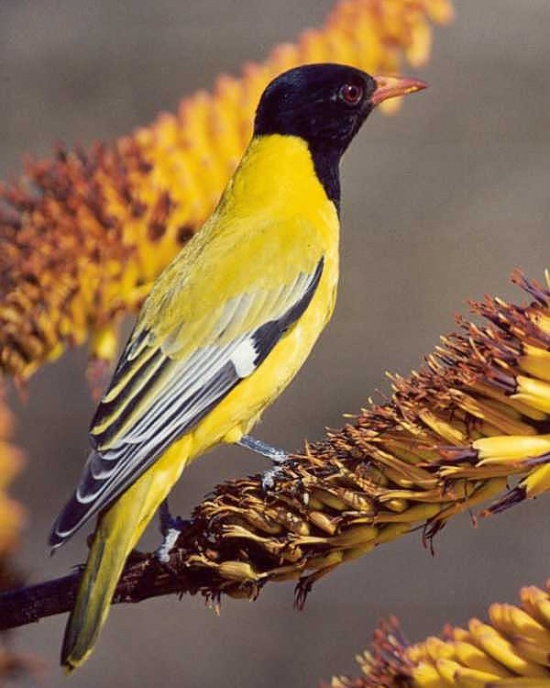| Line 4: | Line 4: | ||
==Identification== | ==Identification== | ||
Bright yellow body, black head, olive central tail feathers, yellowish edge of its inner secondaries, flesh-coloured beak. | Bright yellow body, black head, olive central tail feathers, yellowish edge of its inner secondaries, flesh-coloured beak. | ||
| − | ===Similar Species=== | + | ====Similar Species==== |
Similar species include the [[Western Black-headed Oriole]] or the [[Montane Oriole]]. Where it is conspecific with other black-headed Orioles it tends to be restricted to the forest edge. | Similar species include the [[Western Black-headed Oriole]] or the [[Montane Oriole]]. Where it is conspecific with other black-headed Orioles it tends to be restricted to the forest edge. | ||
==Distribution== | ==Distribution== | ||
Revision as of 00:33, 8 November 2008
| This article is incomplete. This article is missing one or more sections. You can help the BirdForum Opus by expanding it. |
- Oriolus larvatus
Identification
Bright yellow body, black head, olive central tail feathers, yellowish edge of its inner secondaries, flesh-coloured beak.
Similar Species
Similar species include the Western Black-headed Oriole or the Montane Oriole. Where it is conspecific with other black-headed Orioles it tends to be restricted to the forest edge.
Distribution
Sub-Saharan Africa from Sudan and Ethiopia in the north to South Africa.
Taxonomy
Habitat
Inhabits Acacia woodland and other types of open woodland as well as being seen in mangroves and forest.
Behaviour
The diet includes small fruit as well as large insects. The young are fed mostly with caterpillars.




